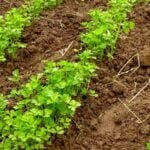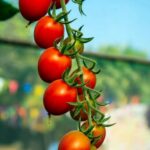Interested in sustainable gardening? Look no further than permaculture vegetable gardening. This method utilizes natural principles to create a self-sustaining and ecologically harmonious garden. In this article, we will explore the principles and benefits of permaculture vegetable gardening, as well as the key elements for creating a successful permaculture garden.
Permaculture is a design system that aims to mimic the patterns and relationships found in nature to create sustainable and productive ecosystems. By understanding and applying the principles of permaculture, gardeners can create gardens that require minimal inputs while maximizing outputs. This not only benefits the environment but also promotes self-sufficiency and resilience.
One of the essential aspects of permaculture vegetable gardening is choosing the right location for your garden. Factors such as sunlight, water access, and soil quality play a crucial role in determining the success of a permaculture garden.
Understanding these elements and how they interact with each other is fundamental to creating a thriving and sustainable garden. In the following sections, we will delve into these topics in more detail, providing practical advice for implementing permaculture principles in your vegetable garden design.
Choosing the Right Location
When it comes to permaculture vegetable gardening, choosing the right location is crucial for the success of your garden. Sunlight, water access, and soil quality are three key factors that can significantly impact the productivity and sustainability of your garden.
The Importance of Sunlight
Sunlight is essential for the growth and development of plants. When selecting a location for your permaculture garden, it’s important to choose an area that receives adequate sunlight throughout the day. Most vegetables require at least 6-8 hours of direct sunlight to thrive, so be sure to take into account any potential obstructions such as buildings or trees that could shade your garden.
Water Access
In permaculture vegetable gardening, easy access to water is essential for keeping your plants hydrated and healthy. Consider proximity to water sources such as a hose, rainwater collection system, or irrigation infrastructure when choosing the location for your garden. Additionally, evaluate the natural drainage patterns in the area to ensure excess water can flow away from your garden beds.
Soil Quality
Healthy soil is the foundation of a successful permaculture vegetable garden. Before establishing your garden, it’s important to assess the quality of the soil in your chosen location. Conduct a soil test to determine its pH levels and nutrient content.
If necessary, take steps to improve soil fertility through methods such as composting, mulching, or planting cover crops. By understanding and enhancing the quality of your soil, you can create an optimal growing environment for your vegetables in a permaculture garden.
By carefully considering these factors when choosing a location for your permaculture vegetable garden, you can set yourself up for success and create an environment where your vegetables will thrive while practicing sustainable farming techniques.
Building Healthy Soil
In permaculture vegetable gardening, healthy soil is essential for the success of your garden. Healthy soil provides nutrients to your plants, supports beneficial microbial activity, and aids in water retention. Here are some key elements of healthy soil and methods for improving soil fertility in a permaculture garden:
Key Elements of Healthy Soil:
1. Organic Matter: Incorporating organic matter such as compost, mulch, and cover crops into your soil helps improve its structure, fertility, and ability to retain water.
2. Microorganisms: A diverse population of microorganisms in the soil is crucial for nutrient cycling and disease suppression. Encouraging the presence of beneficial bacteria and fungi can be achieved through minimizing soil disturbance and adding organic amendments.
3. pH Levels: The pH level of your soil affects nutrient availability to plants. Testing your soil’s pH and making adjustments as necessary can ensure optimal growing conditions for your vegetables.
Methods for Improving Soil Fertility:
– Composting: Creating compost from kitchen scraps, yard waste, and other organic materials provides a rich source of nutrients for your garden.
– Cover Cropping: Planting cover crops like legumes or grasses during periods when the garden is not in use can protect the soil from erosion and add organic matter when they are incorporated back into the soil.
– No-till Gardening: Avoiding tilling practices helps preserve the structure of the soil, maintains the balance of microbial life, and prevents loss of nutrients.
Implementing these methods will help create a thriving environment for your permaculture vegetable garden while reducing the need for chemical fertilizers and promoting sustainable gardening practices. By focusing on building healthy soil, you are contributing to a more resilient and productive garden ecosystem that aligns with the principles of permaculture vegetable gardening.
Selecting the Right Vegetables
When it comes to permaculture vegetable gardening, selecting the right vegetables is crucial for the success of your garden. Consideration must be given to the climate, local wildlife, and companion planting in order to create a thriving and sustainable garden.
Climate Considerations
The first step in selecting the right vegetables for your permaculture garden is to consider the climate of your region. Certain vegetables thrive in specific temperature and humidity conditions, so it’s important to choose vegetables that are well-suited to your climate.
For example, leafy greens like kale and lettuce are well-adapted to cooler temperatures, while tomatoes and peppers prefer warmer climates. By choosing vegetables that are naturally suited to your region’s climate, you’ll set yourself up for success from the start.
Local Wildlife and Companion Planting
In a permaculture garden, it’s essential to consider local wildlife when selecting which vegetables to grow. Certain animals may be prone to eating or damaging specific plants, so it’s important to choose vegetables that are less attractive to local wildlife or can be protected using natural barriers or deterrents.
Additionally, considering companion planting is important for promoting biodiversity and deterring pests. For instance, planting aromatic herbs like basil and mint can help repel insect pests from other vegetables like tomatoes.
Diverse Variety Selection
Diversity is key in permaculture vegetable gardening. Instead of solely focusing on high-yield crops, consider growing a diverse selection of vegetables with different tastes, textures, and colors. By doing this, you’ll not only create a visually appealing garden but also promote soil health through crop rotation. This approach will also help attract beneficial insects and pollinators while reducing the risk of disease spreading throughout your garden.
By carefully considering climate suitability, local wildlife impact, companion planting, and diversity when selecting which vegetables to grow in your permaculture garden, you’ll ensure a healthy ecosystem that supports robust growth without relying on chemical inputs or excessive maintenance.
Designing the Garden Layout
Designing the layout of a permaculture vegetable garden is essential for maximizing productivity and creating a sustainable, self-sufficient ecosystem. By efficiently using space, implementing crop rotation, and employing interplanting techniques, gardeners can ensure a bountiful harvest while also promoting soil health and biodiversity.
One effective way to optimize space in a permaculture garden is by using vertical gardening methods. This allows for the cultivation of vining plants such as cucumbers, tomatoes, and pole beans to grow upwards, freeing up ground space for other vegetables.
Additionally, incorporating companion planting – where mutually beneficial plants are grown in close proximity – can help maximize space utilization and promote natural pest control. For example, planting aromatic herbs like basil or mint near crops like tomatoes can help repel pests that would typically feed on the tomato plants.
Another important aspect of designing the layout of a permaculture garden is implementing crop rotation. This practice involves changing the location of crops within the garden from one season to another to prevent the buildup of pests and diseases in the soil. By rotating plant families or types of vegetables annually, gardeners can maintain soil fertility and reduce the risk of depleting specific nutrients from the soil.
In addition to vertical gardening and crop rotation, interplanting techniques can further enhance the productivity and resilience of a permaculture vegetable garden. Interplanting involves growing different types of vegetables together in close proximity, which can offer benefits such as maximizing sunlight exposure and improving pest resistance through biodiversity. For instance, planting lettuce around taller plants like corn or trellised peas provides shade for the lettuce while also utilizing available space more efficiently.
Overall, designing an efficient layout for a permaculture vegetable garden involves careful planning and consideration of various factors. By incorporating vertical gardening methods, practicing crop rotation, and implementing interplanting techniques, gardeners can create a productive and sustainable ecosystem that fosters the principles of permaculture vegetable gardening.
Implementing Water Conservation
When it comes to permaculture vegetable gardening, implementing sustainable water management techniques is crucial for the success of a garden. One of the most effective methods for conserving water in a permaculture garden is rainwater harvesting. Collecting rainwater in barrels or cisterns provides a free and sustainable source of water for irrigating the garden, reducing reliance on traditional water sources.
Mulching is another essential technique for water conservation in permaculture vegetable gardening. Applying a layer of mulch around plants helps to retain soil moisture by reducing evaporation and inhibiting weed growth. Organic materials such as straw, leaves, or wood chips can be used as mulch, providing additional benefits such as improving soil fertility and regulating soil temperature.
In addition to rainwater harvesting and mulching, drip irrigation is an efficient method for delivering water directly to the roots of plants while minimizing waste. By using hoses with small holes or emitters placed near plant roots, drip irrigation ensures that water is delivered precisely where it’s needed, reducing evaporation and runoff. This method not only conserves water but also promotes healthier plant growth by maintaining consistent moisture levels in the soil.
In summary, integrating sustainable water management techniques such as rainwater harvesting, mulching, and drip irrigation is essential for successful permaculture vegetable gardening. These methods not only conserve water but also contribute to the overall health and productivity of the garden while aligning with the principles of permaculture.
| Water Management Technique | Description |
|---|---|
| Rainwater Harvesting | Collecting rainwater from roofs or other surfaces and storing it for later use in the garden |
| Mulching | Applying a layer of organic material around plants to retain soil moisture and suppress weed growth |
| Drip Irrigation | Delivering water directly to plant roots through a network of hoses with emitters, minimizing waste and promoting healthy plant growth |
Natural Pest and Disease Control
When it comes to permaculture vegetable gardening, one of the key principles is the use of natural pest and disease control methods. Integrated Pest Management (IPM) is a crucial aspect of maintaining a healthy and thriving garden without relying on synthetic chemicals. IPM involves monitoring for pests, identifying them accurately, and using a combination of biological, mechanical, and cultural control methods to manage infestations.
Companion planting is an effective way to naturally control pests in a permaculture garden. Certain plants can repel or deter pests when grown alongside vegetables. For example, planting marigolds among vegetable crops can help repel nematodes, while garlic and onions can deter aphids and other insects. Additionally, attracting beneficial insects such as ladybugs, lacewings, and predatory wasps can help keep pest populations in check.
Organic methods for controlling diseases in a permaculture garden include practices such as crop rotation and good garden hygiene. Rotating crops from year to year helps prevent the buildup of soil-borne pathogens that can lead to diseases in vegetable plants. Likewise, removing and disposing of any diseased plants or plant materials promptly can help prevent the spread of diseases within the garden.
| Companion Plant | Pest Repelled |
|---|---|
| Marigolds | Nematodes |
| Garlic & Onions | Aphids & Insects |
Harvesting and Continual Maintenance
In conclusion, permaculture vegetable gardening offers a holistic and sustainable approach to growing food. By incorporating principles such as efficient use of space, healthy soil building, and natural pest control, permaculture gardens can provide abundant yields while working in harmony with the local ecosystem. The focus on choosing the right location and implementing water conservation techniques ensures that these gardens are resilient and resource-efficient.
When it comes to harvesting vegetables in a permaculture garden, timing is crucial. It is essential to monitor the maturity of each crop and harvest them at the peak of ripeness for the best flavor and nutritional content. Additionally, ongoing maintenance practices such as crop rotation, interplanting, and soil amendment help to ensure the long-term productivity of the garden. This approach minimizes the need for external inputs while promoting a self-sustaining system.
As more individuals recognize the importance of sustainable agriculture, permaculture vegetable gardening has gained popularity. By embracing this method, gardeners can contribute to environmental conservation while enjoying an abundance of fresh and healthy produce.
With careful planning and continual maintenance, a permaculture garden can thrive for years to come, providing a source of organic food and connection to nature. Whether you are an experienced gardener or just starting out, there are numerous resources available for learning about permaculture vegetable gardening and incorporating its principles into your own garden.
Frequently Asked Questions
What Is a Permaculture Vegetable Garden?
A permaculture vegetable garden is a sustainable and eco-friendly approach to gardening that focuses on mimicking natural ecosystems. It involves using organic methods, companion planting, and efficient use of resources to create a self-sustaining food-producing system.
How Do I Start a Permaculture Garden From Scratch?
Starting a permaculture garden from scratch involves first observing the natural patterns and resources in your area. Then, design the garden based on these observations, including water catchment systems, diverse plantings, and minimal disturbance to the soil. It also involves using native plants and considering the needs of local wildlife.
How Do I Turn My Yard Into a Permaculture Garden?
To turn your yard into a permaculture garden, you’ll need to first assess the existing features such as sunlight exposure, soil type, and water availability. From there, design the garden with functional elements like fruit trees for shade and food production, rain gardens to capture runoff, and perennial plants for low-maintenance landscaping.
The key is to work with nature rather than against it for a sustainable and productive garden space.

If you’re looking to get into vegetable gardening, or are just looking for some tips on how to make your current garden better, then you’ve come to the right place! My name is Ethel and I have been gardening for years. In this blog, I’m going to share with you some of my best tips on how to create a successful vegetable garden.





